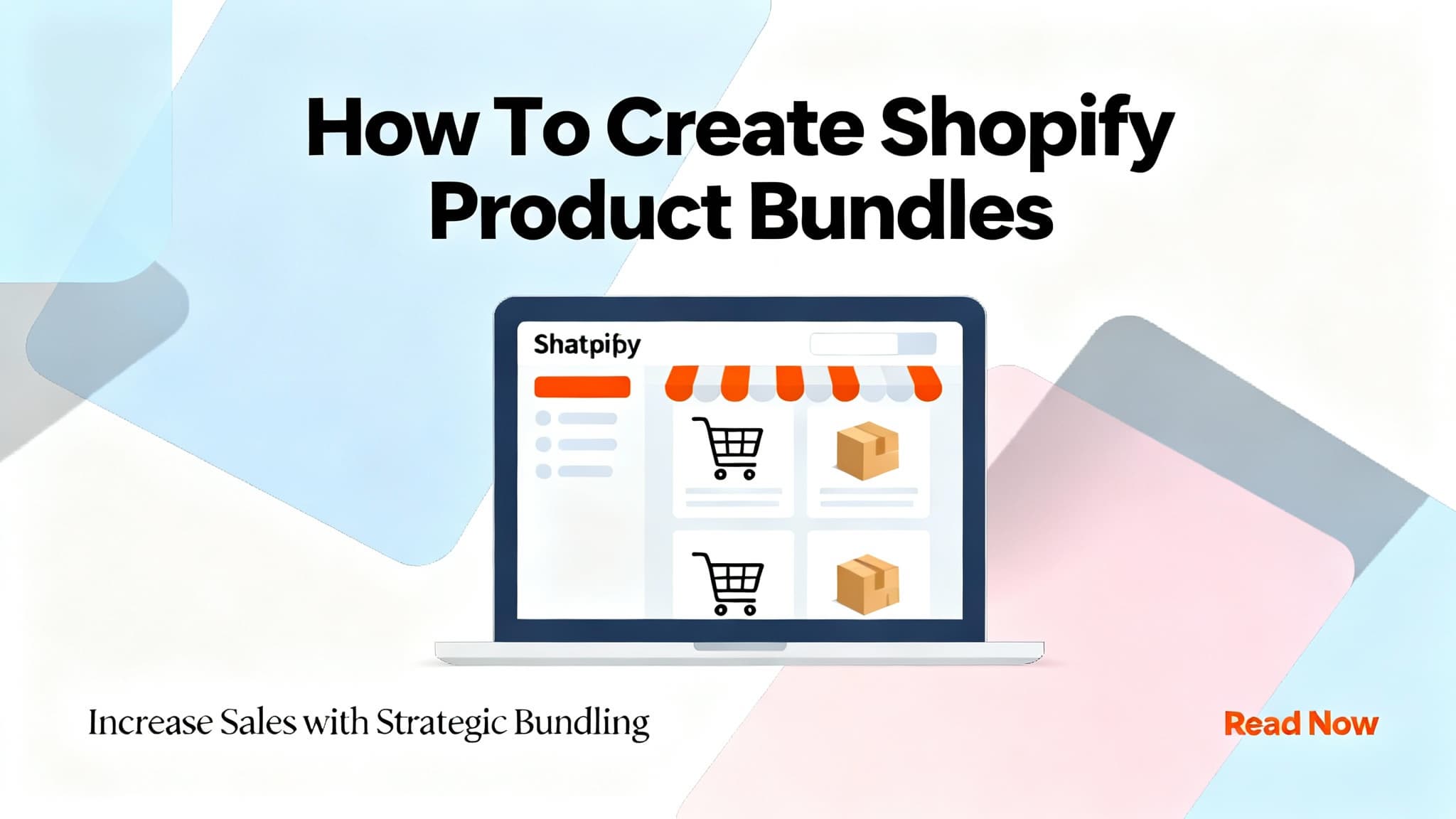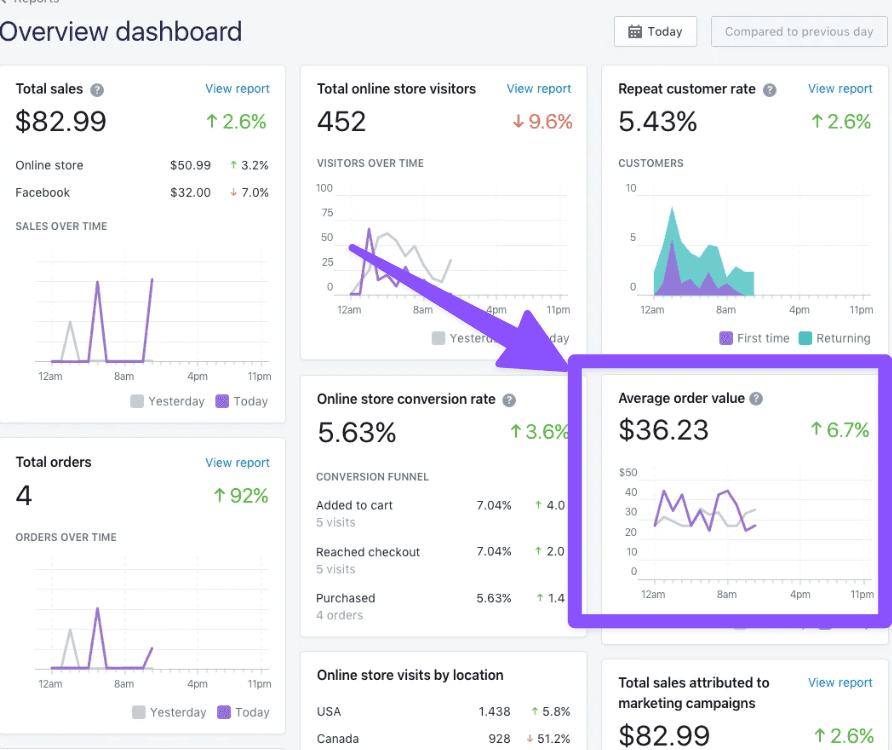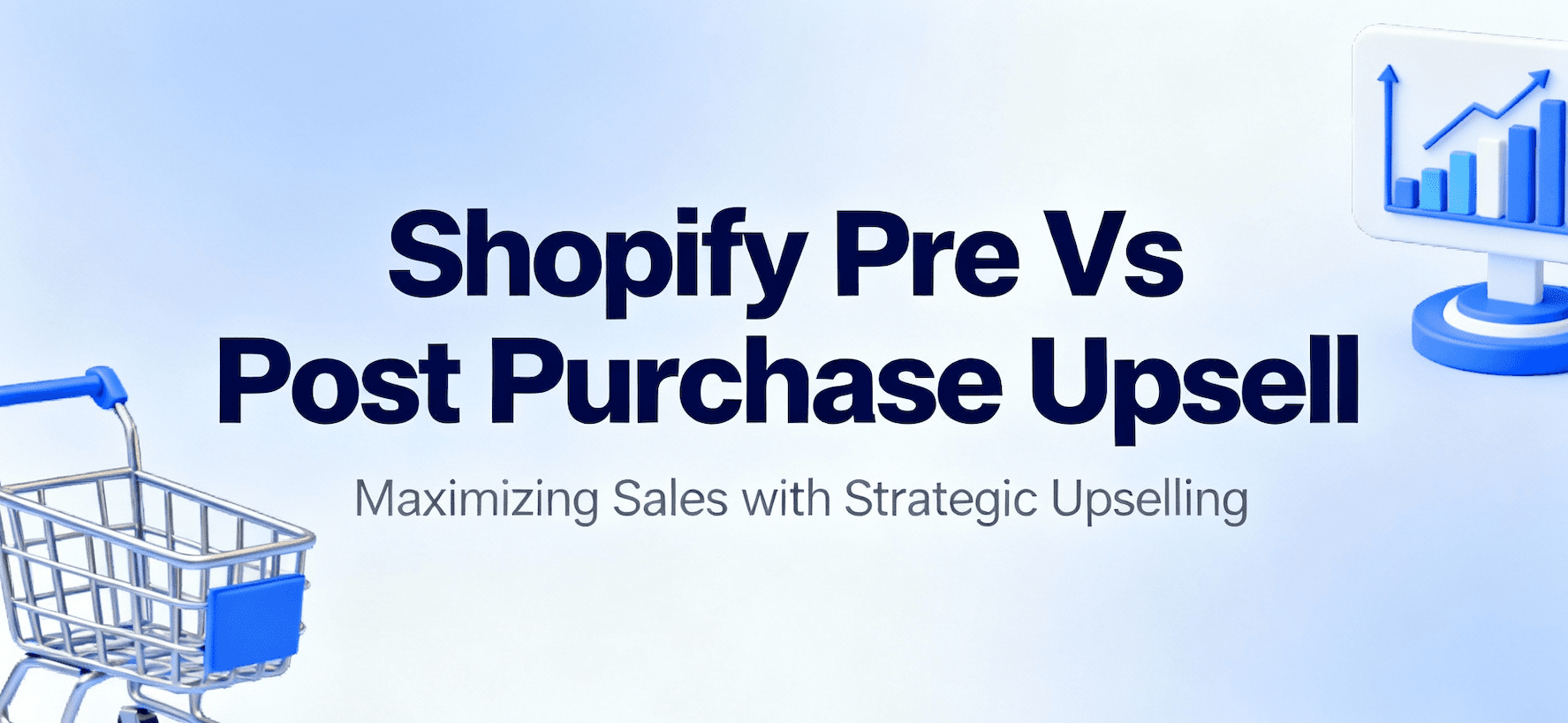Proven Methods To Increase AOV In Your Shopify Or Ecommerce Store

Increase average order value (AOV) by offering product bundles and volume discounts. Set a minimum spend threshold to unlock free shipping for customers. You can also upsell premium products and cross-sell related items in the cart. These strategies encourage shoppers to spend more, directly boosting your AOV.
Let’s be honest, the whole game of running an online store is getting people to spend more money. You can drive yourself crazy trying to find new customers, or you can just focus on getting the people who are already on your site to throw a few more items in their cart. That’s it. That’s the secret sauce, and it’s all about increasing your Average Order Value (AOV).
Product bundles, volume discounts, free shipping if you spend enough… these are the classic moves. You’re just nudging shoppers to spend a bit more than they planned, and that’s how you boost your AOV.

So What Is AOV, Anyway?
Average Order Value, AOV, whatever you want to call it, it’s just a number. It’s the average dollar amount every single customer spends when they place an order. It’s not about your total revenue, and it definitely isn’t about how many customers you have. Its entire purpose is to tell you one thing: what’s a typical purchase worth to your business?
For any ecommerce company, especially the legions of them on platforms like Shopify, not tracking AOV is basically flying blind. It’s the metric that tells you if your pricing is right, if your marketing is working, or if your website is actually convincing people to buy. When that number goes up, it means people are buying more stuff or more expensive stuff. That’s gold. It’s how you figure out how to squeeze more juice from the customers you already have, and a business that can do that is a business that’s going to stick around. You have to be consistent and really look at this data.
The Math is Almost Too Easy
Figuring out your Average Order Value is dead simple. You need two numbers: your total revenue for a period (like a month) and the total number of orders you got in that same time. The formula isn’t exactly rocket science.
It’s just: Total Revenue / Total Number of Orders = Your AOV
So imagine your little Shopify store did $50,000 last month. Great. And you got 1,000 different orders to hit that number. The math would be:
$50,000 in cash / 1,000 orders = a $50 Average Order Value.
This means that, on average, when someone decides to buy something, they spend $50. Now you have your baseline. This is the number to beat. If you start bundling products together and next month your AOV climbs to $65… well, you know the new tactic is working. It lets you make smart moves based on what’s actually happening, not just what you think your customers want.
Why You Should Obsess Over a Higher AOV
Chasing a higher AOV is just a more efficient way to grow. Seriously. Finding new customers is a slog and it costs a ton of money in ads and marketing. Convincing your existing customers to spend a little more? That’s where the real profit is. A higher AOV makes the whole operation healthier.
The most obvious win is just… more revenue. Every customer spending more means your total sales go up without you needing more customers. But the real magic is in the profit margins. Think about it, the money you spent on ads to get that one customer is a fixed cost. If you can get that customer to spend $60 instead of $40, that extra $20 is almost pure profit because you already paid to get them in the door. It makes your Return on Ad Spend (ROAS) look incredible. That $10 you spent on an ad to get a $40 sale (a 4:1 ROAS) suddenly looks way better when it’s a $60 sale (a 6:1 ROAS). It’s a growth machine.
I mean, the benefits just stack up: you maximize the cash from every customer, improve profitability, make your ad budget work harder, increase customer lifetime value, ship fewer but bigger packages (which saves money), introduce people to more of your products, and build loyalty with better deals. It’s a ripple effect.
And that loyalty thing, the Customer Lifetime Value (CLV), is a big one. When people have a good experience with a larger first purchase, maybe from a bundle you offered, they’re way more likely to come back. You’ve shown them more of what you offer, they trust you more, and their long-term value just skyrockets. Plus, from a pure logistics standpoint, packing one big order is almost always cheaper than packing two small ones. It’s a hidden win for your bottom line.
What Moves the Needle on AOV?
Your AOV isn’t some fixed number; it’s wiggling all the time based on a ton of factors. Understanding what those are is how you start to control it.
The most fundamental thing is just what you sell and for how much. A shop selling diamond rings is obviously going to have a higher AOV than one selling stickers. But your mix matters. If you only sell cheap stuff, you can’t be surprised by a low AOV. You need some premium options to upsell people to.
Then you have customer behavior. New customers are skittish; they might place a small order just to see if you’re legit. Your loyal fans? They’ll drop a lot more cash. Digging into your data to see how different people behave, by age, location, whatever, can show you who to target with which offers. And don’t even get me started on shipping costs. People loathe shipping fees. It’s probably the #1 reason people ditch their carts.
But flip that around, and a well-thought-out “free shipping over $X” policy becomes your most powerful tool. It turns a cost into a revenue driver. So, things that influence spending are the perceived value of your stuff, your promos, the shipping strategy, how easy your site is to use, and whether people actually trust your brand.
Your promotions have a direct effect, too. A simple 10% off coupon might just get someone to buy the one thing they were already going to buy, but for less money. That can actually lower your AOV. But an offer like “Save $20 on orders over $100” is designed from the ground up to make people spend more. And finally, if your website is a clunky, slow, confusing mess (your User Experience or UX), people will just buy the one thing they came for and get out. Or leave entirely. A clean, fast site invites people to explore and add more to their cart.
Ways to Actually Get People to Spend More
Alright, so you get it. Higher AOV is good. How do you do it? The best brands, especially on Shopify, are masters of a few key tactics that make every customer think, “hmm, maybe I’ll just add one more thing…”
Free Shipping Threshold
The absolute king of all tactics is the free shipping threshold. The psychology is bulletproof: people would rather spend another $15 on a product they kind of want than “waste” $6 on shipping. The trick is to set the threshold just a little higher than your current AOV. If your AOV is $65, make free shipping kick in at $75. It feels like a smart financial choice for the customer.
Product Bundling
Next up is product bundling. Grouping related items into a “kit” or “pack” for a slight discount is a no-brainer. A coffee company could sell a “Morning Starter Kit” with beans, a mug, and a scoop. It introduces customers to more products and inflates the cart value instantly. Very similar to this is offering volume discounts. This is just gamifying the shopping cart. “Buy 2, get 10% off; Buy 3, get 20% off.” People can’t resist trying to hit that next tier. It feels like they’re winning a prize.
Upselling & Cross-Selling
Of course, you have to master upselling and cross-selling. Cross-selling is the “You want fries with that?” of ecommerce, suggesting complementary items. If they buy a camera, you show them a memory card and a bag. Upselling is convincing them to buy the slightly better, more expensive version of the product they’re looking at. The key is to show the value of the upgrade, not just the price.
Post Purchase Offer
And what about after the sale? A post-purchase offer is genius. Right after they’ve paid, on the confirmation screen, you hit them with a one-time-only deal. They’ve already trusted you with their credit card, so their resistance is low. A Shopify store could offer 50% off socks right after someone buys shoes, and they can add it to the order with one click. It’s a powerful way to snag an extra sale.
A lot of data from places like Shopify and McKinsey shows these tactics work. Free shipping and bundling can both boost AOV by around 30%. Upsells and cross-sells are often responsible for 10-30% of a store’s entire revenue. And post-purchase offers can tack on an extra 10-15%. The numbers are real.
Customer Loyalty
A good customer loyalty program also works wonders. If people get points for every dollar they spend, they’ll be more likely to place bigger orders to hit reward thresholds faster. And don’t forget minimum spend discounts like “$10 off orders of $75 or more.” For people who don’t care about shipping, a direct discount is a huge motivator.
Lowering the psychological barrier of a high price with flexible payment options (like Afterpay or Klarna) is another great move. A $200 purchase feels a lot less scary when it’s four payments of $50. You can also offer a free gift with purchase over a certain amount, which feels like a fun bonus.
Personalization
Using AI to power personalized product recommendations is a more organic way to do this; it feels like you’re helping them discover things they’ll actually love. And a proactive live chat can work like a personal shopper, guiding customers to the right products and accessories.
Urgency
Finally, you can create urgency with time-sensitive offers, appeal to values with charitable donations on larger orders, build trust with a super-easy return policy, and even gamify the experience with a progress bar that shows them how close they are to unlocking a reward.
At the end of the day, a basic discount is okay, but a tiered pricing strategy that rewards bigger orders is far more effective. You need to dive into your customer data, your Shopify metrics will literally tell you what people buy together. Stop guessing. That’s your next product bundle, right there. Bundles often feel like a much better value to a customer than a simple dollar-off coupon. It’s a curated experience, and it’s a proven way to get better results.
Common FAQS Where Asked
Below you can read common questions we’re asked.
Beyond a simple discount, what pricing strategy rewards customers for larger orders?
A tiered pricing strategy is an effective approach. For example, offer increasing discount percentages or exclusive rewards as the customer’s order value grows. This tactic encourages shoppers to add more items to achieve a better deal, directly improving results.
How can customer data and metrics inform effective AOV offers on Shopify?
Use customer purchase data on your Shopify store to create personalized offers. Analyzing metrics helps identify products people frequently buy together, providing a data-driven choice for creating bundles or upsell strategies that resonate with specific buyers.
Which approach is better for consumers: a minimum order discount or product bundling strategies?
While a discount is a good tactic, bundling strategies often provide more perceived value to consumers. This approach gives buyers a curated choice and a simple way to get more, often leading to better results than a simple minimum order goal.
Ready to Boost Your Shopify Store?
Increase revenue with video upsells and dominate search rankings with AI-powered SEO.
Related Articles

Creating Product Bundles In Shopify – Strategic Options
Create product bundles in Shopify by using an app. First, install the official Shopify Bundles app from the app store, or alternative apps such as Optizen Video Upsells. Inside the app, click “Create bundle” to begin. You then choose which products to include in your offer. Set a fixed price or a percentage discount, then […]

Finding Your Average Order Value in Shopify (And Why It Matters)
Find your Average Order Value (AOV) in your Shopify reports. Navigate to the Analytics section from your Shopify admin dashboard, then select Reports. Your store’s AOV is a key metric displayed on the main sales reports. You can also adjust the date range to analyze your AOV over specific periods. First, the easy part. To […]

The Real Technical Split: Pre- vs. Post-Purchase Upsells
A pre-purchase upsell is an offer shown before a customer pays, modifying the current shopping cart. A post-purchase upsell is an offer shown after a customer completes payment, creating a new, separate transaction. The main difference is the timing of the offer relative to the initial payment and its effect on the order. On the […]